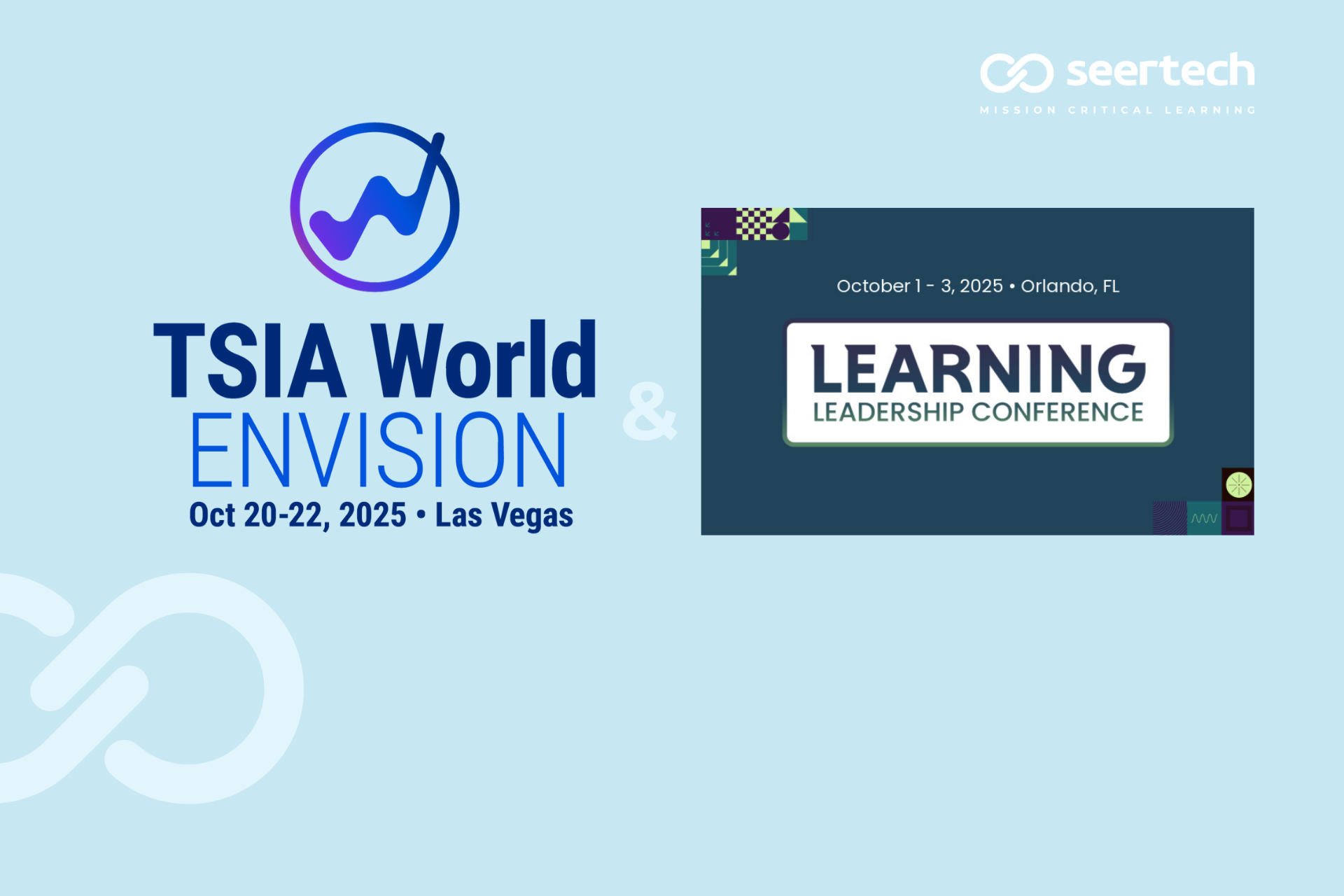
Artificial intelligence is everywhere — from product roadmaps to flashy headlines — yet most learning platforms still rely on fragmented, outdated methods to track skill development (yes, even manual Excel entries). If your platform isn't using AI to power a unified skills validation model, you're not just wasting your skills investment — you're limiting your business impact.
The reality? Endorsements and completions aren't enough.
When organizations can't validate what their people can actually do, business outcomes suffer. From bottlenecks in scheduling to costly compliance gaps, the risks are real — and often hidden beneath a layer of surface-level reporting that doesn't connect to organizational goals. As many HR and L&D teams face budget cuts, failing to use AI to fill the gaps only compounds the problem — undermining performance today and robbing from future potential.
It's not enough to talk about AI. You need AI that closes the loop between learning and performance — AI that validates, not just collects.
The Cost of Guessing: What Happens Without Skills Validation
Admin Fatigue
L&D and HR teams are often tasked with implementing a skills-based strategy, but most tools only support ingestion — not alignment. You can pull in taxonomies from LinkedIn, Workday, SFIA, and internal libraries… but now what?
These taxonomies don't speak the same language. Admins are left manually mapping skills to courses, untangling conflicting frameworks, and maintaining complicated spreadsheets just to create a usable structure. It's a time sink that often results in project delays or total abandonment.
Manager Overload
Without true validation, managers are expected to confirm skills through one-click endorsements — often without any real evidence. It turns into an administrative burden that pulls them away from higher-impact work. Instead of coaching their teams, they're approving skills they're not always equipped to evaluate.
Disconnect Between Learning and Capability
Completion doesn't equal competence. Without validation, there's no reliable connection between what someone has done and what they can do. Learning records become activity logs, not indicators of readiness. That lack of clarity causes misalignment across teams and disconnects L&D from business impact.
Compliance and Regulatory Risk
In high-stakes industries, unvalidated skills can be a major liability. Self-reporting or endorsement-based systems fall apart during audits or safety reviews. If there's no clear, verifiable path from course completion to proven skill, organizations expose themselves to serious risk — legal, operational, and reputational.
Stalled Strategic Initiatives
Workforce strategies like internal mobility, agile staffing, and succession planning rely on trustworthy skill data. When that data is fragmented or unverifiable, progress stalls. Initiatives stay in the planning phase while manual workarounds continue behind the scenes.
What AI-Powered Skills Validation Looks Like
AI-powered skills validation starts with recognizing that ingesting skills data is only step one. To create a truly skills-based organization, AI must support the unification, mapping, and evidence-based confirmation of skill development.
This means aligning disparate taxonomies from content providers, systems like Workday or LinkedIn Learning, and internal job frameworks into a shared model. When AI handles this alignment, skills become searchable, reportable, and actionable across libraries and roles without manual intervention.
From there, learning content must be mapped to specific skills and proficiencies. AI can identify which courses develop which skills, and at what levels. It can also track learning progress in a meaningful way: not just logging completions but linking outcomes to skill growth.
Validation happens through built-in checkpoints: assessments, demonstrated performance, peer or SME review, or completion of role-based learning paths. AI can surface these checkpoints at the right moment and ensure that skill achievement is tied to real evidence.
The result is a system that doesn't just collect activity — it supports decisions, readiness, and performance by showing who is truly capable and where gaps remain.
The Payoff: What Skills Validation Delivers
For Admins and L&D Teams
AI-powered validation means skills no longer need to be manually mapped, tracked, or verified. Taxonomies are aligned automatically, metadata is created at scale, and course-to-skill relationships are built into the system. That reduces overhead, simplifies reporting, and gives teams more space to focus on strategic initiatives.
It also improves launch velocity and agility. With less manual work required to organize and validate learning, L&D teams can move faster on new programs and respond more easily to business needs as they shift.
For Managers
Instead of spending time endorsing completions or verifying skills manually, managers gain a clear view of what their teams can actually do and where support is needed. Validation becomes a part of the system, not another task added to their workload.
This frees them to do what they're uniquely positioned to do: coach, lead, and apply their own expertise to solving business problems. The time saved from low-impact admin becomes time spent strengthening team performance.
For the Business
Validated skills data helps the organization run smarter. It improves work assignment accuracy, supports better role-based resourcing, and ensures compliance is complete and auditable.
But more than that, it allows every part of the business to function with fewer blockers. Admins spend less time reconciling data. Managers spend less time chasing confirmations. And talent can move more freely across roles because the organization has confidence in what people can actually do, not just what they've completed.
In short, validation strengthens the connection between learning and operational performance. It reduces rework, cuts friction, retains talent, and gives every team better tools to do their best work.
If You're Only Endorsing, You're Only Guessing
The difference between "we think they can" and "we know they can" is more than semantics. It's the difference between learning as a checkbox and learning as a key driver of business performance.
AI-powered skill validation bridges that gap. It gives you structure, clarity, and trust — not just in your data, but in your people. It also ensures that what you're investing in actually translates to what your organization needs to perform, adapt, and grow.
If you are not doing this – you are effectively robbing from your future.
If you're ready to stop guessing and start validating, we'd love to show you how it works.
Recent articles

Fall 2025’s Learning and Development (L&D) Conference Circuit: What to Know Before You Go
Introduction to Key Learning Events In a time when businesses are racing to keep pace with rapid technological advancements and shifting workforce dynamics, finding effective strategies for learning and development has become paramount. For organizations aiming to bridge skill gaps, integrate AI-driven solutions, and stay ahead in competitive markets, attending the right events can [...]

L&D Leader’s Field Guide: Actionable Checklist for Senior Learning & Development Leaders
Everyone loves a good checklist — well, maybe just the type-A folks. Whether you’re the type who thrives on ticking boxes or someone who prefers big-picture thinking, this guide is designed to support both. We’ve compiled key actions senior L&D leaders can use to drive real business results, organized by theme for quick reference [...]




